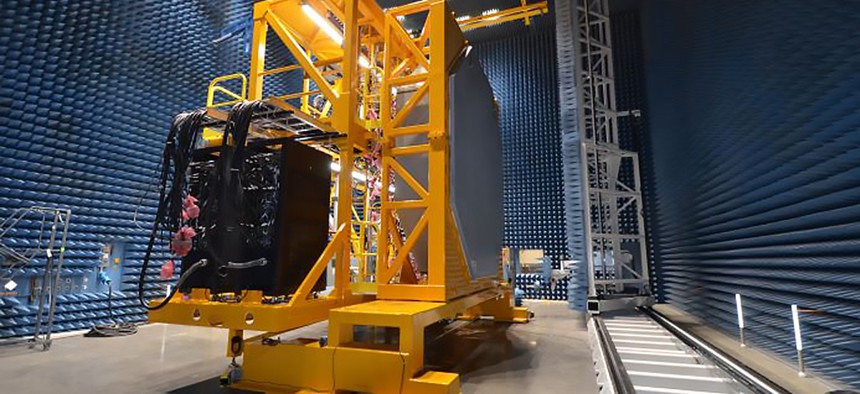sponsor content What's this?

The U.S. Navy's SPY-6 integrated air & missile defense radar in production at Raytheon's Radar Development Facility in Andover, Massachusetts.
Five fast facts about SPY-6
What you need to know about the Navy's newest radar
Presented by
Raytheon

A next-generation, air-and-missile-defense radar is helping the U.S. Navy's surface fleet fill a critical capability gap.
AN/SPY-6(V)1 allows ships to simultaneously detect and counter ballistic missiles – one of the world’s fastest-growing threats – as well as other dangers in the air and on the sea.
Here are five facts about the Navy’s new radar:
FACT 1: ONE BIG FAMILY
There isn’t just one. SPY-6 is a family of advanced naval radars. These sensors are being installed on destroyers, large-deck amphibious ships, aircraft carriers and frigates.
SPY-6(V)1 provides significantly enhanced range, greater resistance to environmental or man-made electronic clutter, and higher reliability and sustainability than currently deployed radars. The radar's demonstrated sensitivity – significantly more than current fielded radars – provides better coverage for early and accurate detection.
SPY-6(V)2 and SPY-6(V)3 are smaller, rotating and fixed-face versions respectively, which are also known as Enterprise Air Surveillance Radar, or EASR. They provide continuous, 360° situational awareness, air traffic control and ship self-defense coverage.
SPY-6(V)4 has four fixed faces. It will offer next-generation, integrated, air-and-missile defense for Flight IIA destroyers as they are brought in for modernization.
FACT 2: IT’S A MASTER MULTITASKER
These radars provide what other naval radars can’t: simultaneous defense against a host of threats. Among their advantages, scalability tops the list. The radar can be configured for any ship based on its mission requirements.
SPY-6 counters large and complex raids, and works in high-clutter and jamming environments. Its software baseline is reprogrammable, meaning it is able to adapt to new missions and emerging threats. And the radar harnesses advanced tech like gallium nitride, a semiconductor technology that enables 360-degree, Active Electronically Scanned Array capability. AESAs lets operators adjust radar beams in ways older systems can’t.
FACT 3: IT HAS BUILDING BLOCKS
The radar is built with individual ‘building blocks’ called Radar Modular Assemblies. Each RMA is a self-contained radar antenna in a 2’x2’x2’ box. RMAs can stack together to form an array of nearly any size to fit the mission requirements of any ship. This technology makes SPY-6 the Navy’s first truly scalable radar. The number of RMAs in each variant is customized for mission sets and ship class.
FACT 4: REPAIRS TAKE JUST TWO TOOLS
You only need two tools to fix the radar array. Close to 95 percent of the array's maintenance comes down to just a few unique parts. Technicians can switch them out in six minutes, using only two tools.
Simplicity, reliability and design for manufacturing and assembly are top of mind for SPY-6 engineers. The radar requires 70 percent fewer unique parts than the existing system on today’s Arleigh Burke class destroyers. Because of this, it takes much less time and effort to make repairs.
FACT 5: IT HAS INTERNATIONAL APPEAL
SPY-6 radars can be procured by U.S. partners and allies. International navies can modernize their surface fleets with the advanced sensor and benefit from commonality and interoperability with the U.S. Navy’s radar program of record.
Since its inception in January 2014, the program has met 20 of 20 milestones in the U.S. Navy's dedicated AN/SPY-6(V)1 testing program ahead of or on schedule. Currently in production, the radar will be delivered to the Navy's first modernized DDG 51 Flight III, the future USS Jack H Lucas (DDG 125). It is the eyes of Aegis and will also be on other Flight III Arleigh Burke-class destroyers.
AN/SPY-6(V)2 recently completed initial, system-level tests at the Surface Combat System Center at Wallops Island, Virginia. Upon completion of system-level testing, the radar will shift from the engineering and manufacturing development phase to the production phase. The first delivery of AN/SPY-6(V)2 will be to the America-class amphibious assault ship USS Bougainville (LHA-8).




